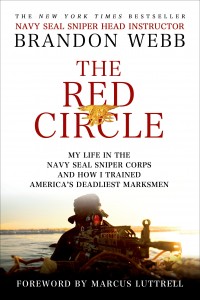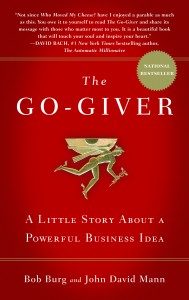This is the toughest part.
Last summer I worked on an amazing book project, a memoir of a well-known public figure who struggled privately for decades with addiction and alcoholism, even as he lived publicly in the limelight of television and politics, and who eventually triumphed.
Throughout the fall we worked on revisions, making the manuscript as perfect as we could. It’s an incredibly inspiring story; it was an incredibly inspiring project. Now comes the hard part: this month our agent takes it to New York to sell it.
Why so hard? Because this is the part where I sit back and wait. Can’t do a thing. Out of my hands. It’s like when your children go off to school. You’ve done your best, done all you can, and now it’s in the hands of God, fate, and the universe. (And, in this case, my agent.)
The toughest part about it is that we already got several rejections back in the fall, when we sent out the first draft to a few editors. (As I described here.)
Do we find that discouraging? We do not. Why not? It has to do with what is perhaps the single most important aspect of writing:
Perseverance.
I’ve been here before. In 2010, we sent a book proposal for a different project around to publishers in New York. The proposal included a sample chapter, a few excerpts from some of the later chapters, and a complete outline of the book with summaries of each chapter. Here’s the response we got:
Editor 1 at Publisher A liked what he saw, but “couldn’t get any support in-house.”
Editor 2 at Publisher B said, “I just don’t know how I’d elevate this story and this writing into a successful book.”
Editor 3 at Publisher C was interested, but he couldn’t get his colleagues behind it.
Editor 4 at Publisher D said it just wasn’t for him.
Editor 5 at Publisher E said he liked it, but his colleagues didn’t think the memoir aspect was working.
Editor 6 at Publisher F deferred to Editor 5 back at Publisher E since he had stronger interest in the project, and they were both divisions of the same company and wouldn’t bid against each other.
Editor 7 at Publisher G said he preferred memoirs with “a prescriptive aspect.”
Editor 8 at Publisher H said, “The writing is very strong. However, I worry that 1) there have been so many similar books that have already been published, 2) so many of the events/scenes are from years ago, and 3) that there is no real story line holding the narrative together, other than the fact that it is the author’s memoir. At the end of the day I have enough reservations that I think I have to bow out. But I really enjoyed what I read — the material was first rate.”
Editor 9 at Publisher I never responded to any of our agent’s emails or calls.
Editor 10 at Publisher J said, “The author’s credentials are impressive, but I wish there had been more actual story. I wasn’t that interested in his childhood, unfortunately.”
Editor 11 at Publisher K loved it, bid for it … and bought it.
The book came out in 2012 and went straight onto the New York Times bestseller list. It has sold more than a hundred thousand copies, is now out in Chinese, French and Polish editions, and is going strong.
We’re so glad we didn’t quit at Editor 10.
One more example.
Way back in 2006 we sent a manuscript for yet another project around to a handful of publishers in New York, and got the following responses:
Editor 1 at Publisher A said no.
Editor 2 at Publisher B said no.
Editor 3 at Publisher C said no.
Editor 4 at Publisher D said no.
Editor 5 at Publisher E said no.
Editor 6 at Publisher F said no.
Editor 7 at Publisher G said no.
Editor 8 at Publisher H said, “This one was pretty interesting. The writing is good, but the payoff was a bit lacking. So we have decided to pass on this one.”
In other words … no.
So we took the manuscript back, spent months reworking it, and then in 2007 sent it around to publishers again. This time, some of the same editors from 2006 responded again, as did a few different editors at some of the same publishers, as well as some altogether new editors from entirely different publishers. Here’s what they said:
Editor 9 at Publisher A (Editor 1’s publisher) said no.
Editor 10 at Publisher B (Editor 2’s publisher) said no.
Editor 11 at Publisher I said no.
Editor 12 at Publisher J said no.
Editor 13 at Publisher K said no.
Editor 14 at Publisher L said no.
Editor 15 at Publisher M said, “Starts out with a bang but loses steam in the middle and end.”
Editor 16 at Publisher N said, “Liked it, but not quite right for our imprint and the direction we are going in this year.”
Editor 17 at Publisher O passed to Editor 18.
Editor 18 at Publisher O said, “Like it, but couldn’t get other team members enthusiastic about it.”
Editor 4, back at Publisher D, who’d said no on the first try, said, “I read the material and it’s very well done. But I don’t think it is the kind of book that will work well on our business list.”
Editor 5, back at Publisher E, read the new version and said, “Needs a very unique hook or punchline to get people to respond. The writing is great but payoff not strong enough.”
Editor 6, still at Publisher F, said, “Saw this twice now. Liked it, but didn’t love it. The dilemma has been that while I like the message a lot, the story itself seemed a little more didactic and forced than we would like.”
Editor 7 back at Publisher G, another one of our earlier no’s, said, “Liked it. I wanted to love it, but I’m afraid I just didn’t connect with it. What I look for in business books is a problem that needs to be solved. And I just didn’t see the problem this book addresses. I’ve been incredibly wrong before and probably am on this one. But I’m going to have to pass … with regret.”
Editor 19 at Publisher H (the one where Editor 8 had said “This one was pretty interesting…” but still said no the previous year) was Adrian Zackheim at Portfolio, an imprint at Penguin.
And so, at the beginning of 2008, Portfolio published our little story. It has since sold nearly half a million copies in 22 languages around the world. It’s called The Go-Giver.
You may have heard this saying, “If at first you don’t succeed, try, try again.”
The next time you’re discouraged about something you believe in, something you passionately want to see happen but so far doesn’t seem like it’s working, please remember: that isn’t necessarily how it really goes. It’s not always “try, try again.”
For The Go-Giver, it was like this:
If at first you don’t succeed, try, try, try, try, try, try, try, try, try, try, try, try, try, try, try, try, try, try, try, try, try … and then try again.




Hmm. Maybe you should write a book on this!
Great post.
Ha! There actually is a book on this: “Rotten Rejections: Letters that Publishers Wish They’d Never Sent,” by Andre Bernard. Hilarious rejections of authors who went on to become household-word famous. (D’oh!) Thanks, Art! I’ll post the outcome of our current edge-of-the-seat waiting game in a few weeks …
Just learned about The Go-Giver, excited to pick up a copy off Amazon. This post reminded me a bit of myself, I think everyone can relate at some point in their life. Great post!
Many thanks, Omaid — hope you enjoy the book and find it useful!